Introduction
How Many Babies Can A Rabbit Have: Rabbits are well-known for their remarkable reproductive capabilities. These small mammals belong to the family Leporidae and are known for their rapid breeding cycle and large litters. The reproductive habits of rabbits have captured the attention of researchers and enthusiasts alike, as their ability to multiply quickly has both biological and ecological implications. In this discussion, we will explore the fascinating world of rabbit reproduction and delve into the question: How many babies can a rabbit have?
Rabbits are known for their prolific breeding habits, which are a result of their evolutionary adaptation to survive in various environments. Unlike humans and some other mammals, rabbits are induced ovulators. This means that they ovulate in response to sexual activity. The act of mating stimulates the release of eggs from the female rabbit’s ovaries.The gestation period, which is the time between conception and birth, for rabbits is relatively short compared to many other mammals. It typically ranges from 28 to 32 days, depending on the rabbit species and environmental factors. This short gestation period allows rabbits to reproduce multiple times within a year.
Rabbits are known for their large litter sizes. A single female rabbit, also known as a doe, can give birth to a litter ranging from a few kits (baby rabbits) to as many as 12 or more in some cases. The litter size can vary based on factors such as the rabbit’s age, health, genetics, and environmental conditions.Rabbits are known for their rapid breeding cycle. After giving birth, a female rabbit can become fertile again within a few days. This quick turnaround time allows rabbits to have several litters in a year, contributing to their reputation for prolific breeding.
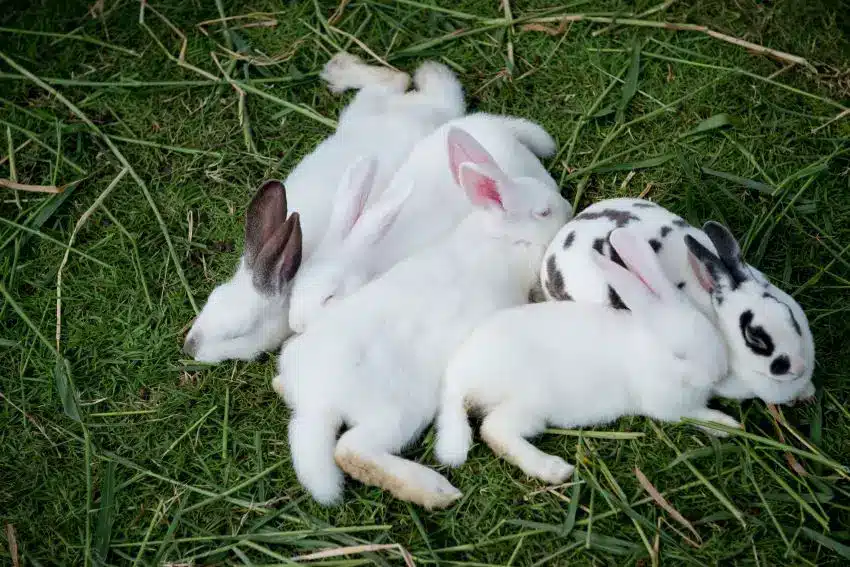
Can a rabbit have 20 babies?
“Breed like rabbits” is a common expression and rabbits are indeed prolific breeders! In one year, a doe can produce more than 20 offspring and many of these will breed themselves when only 4 months old.
The Rabbit Reproductive System
Before delving into the possibility of a rabbit having 20 babies, it’s essential to understand their reproductive system. Rabbits are known for their rapid breeding cycle, with a gestation period that typically ranges from 28 to 31 days. Female rabbits, known as does, are known to ovulate upon mating. Interestingly, this phenomenon is called induced ovulation, which means that the act of mating stimulates ovulation in female rabbits.
Litter Size Variability
Rabbit litter sizes can vary significantly depending on factors such as breed, age, health, and environmental conditions. While the average litter size is around 4 to 12 kits (baby rabbits), it’s not uncommon for some rabbits to have larger litters. However, the idea of a rabbit giving birth to 20 babies is on the higher end of the spectrum and is more likely to be observed in domestic rabbits bred for such traits.
Selective Breeding and Domestication
Humans have selectively bred rabbits for various traits, including larger litters, in domestic rabbit populations. Through careful breeding practices, some rabbit breeds have been developed to produce larger numbers of offspring. While this selective breeding has resulted in larger litters, it’s important to note that even in domestic rabbits, reaching 20 babies in a single litter is still quite rare.
Health and Survival Considerations
While the idea of a rabbit having 20 babies is intriguing, it’s crucial to consider the health and survival of both the mother and the offspring. Larger litters can put strain on the mother’s body, potentially leading to health complications during pregnancy or birth. Additionally, raising a substantial number of kits can be challenging for the mother rabbit, especially if she has limited resources to provide for them.
How many babies do rabbits have at one?
The average litter size for rabbits is five, though mothers may give birth to as few as one and as many as 12! Since young rabbits grow up quite quickly, “doe” rabbits may have three or four litters in a season.
Typical Litter Sizes
The average litter size for rabbits typically ranges from 4 to 12 kits (baby rabbits), with 6 to 8 kits being quite common. However, it’s essential to remember that these numbers are averages and can vary widely depending on the factors mentioned above. While domesticated rabbits are more likely to give birth to larger litters due to selective breeding, wild rabbits generally have smaller litters to ensure the survival of their offspring in the wild.
Reproductive Strategy
Rabbits have evolved a reproductive strategy that balances their rapid breeding cycle with the need to ensure the survival of their young. The ability to reproduce frequently and have relatively large litters allows rabbits to increase their chances of passing on their genes. However, in the wild, smaller litter sizes are often more advantageous as they ensure that the mother can provide enough care and resources for the offspring’s survival.
Rabbits are captivating creatures when it comes to reproduction, showcasing an intricate balance between quantity and quality in their offspring. The number of babies a rabbit can have in a single litter varies due to genetic, age-related, health, and environmental factors. Understanding these variables allows us to appreciate the adaptive nature of these animals and the evolutionary strategies they employ to ensure their species’ survival. Whether in the wild or within domestic settings, rabbit reproduction continues to be a fascinating area of study that sheds light on the diversity of life’s reproductive strategies.
How many times a rabbit gives birth in a year?
Rabbits also have a short gestation period, between 25 and 28 days, which means they can have several litters of babies each year. Eastern cottontail rabbits can have between one and seven litters each year, and they average three or four litters annually, Animal Diversity Web reports.
Reproductive Patterns
Unlike many other animals, rabbits do not have a specific breeding season. Instead, they are considered induced ovulators, meaning that the act of mating triggers their ovulation. This unique trait enables rabbits to reproduce throughout the year, leading to the possibility of multiple pregnancies annually.
Typical Reproductive Frequency
On average, rabbits are capable of giving birth around 4 to 6 times per year. However, this frequency can vary due to several factors, including breed, health, age, and environmental conditions. Domesticated rabbits bred for specific traits, such as prolific reproduction, might have more frequent litters compared to their wild counterparts.
Breed and Genetic Influence
Selective breeding has played a significant role in shaping the reproductive patterns of domestic rabbits. Breeds that have been specifically bred for high fertility and rapid reproduction are more likely to give birth more frequently. These rabbits often exhibit shorter gestation periods and quicker postpartum recovery times.
Health and Nutrition
A rabbit’s reproductive frequency is also influenced by its overall health and nutritional status. Well-fed, healthy rabbits are more likely to have regular reproductive cycles. Malnourished or stressed rabbits may experience disruptions in their reproductive patterns, leading to fewer litters in a year.
Postpartum Recovery
After giving birth, a rabbit needs time to recover before going through another pregnancy. The demands of nursing and caring for the kits can take a toll on the mother’s body. Thus, while rabbits are capable of reproducing frequently, their bodies require adequate time to recuperate between pregnancies.
How many babies can a rabbit have in a month?
Rabbit gestation lasts 28-31 days, and because they are induced ovulators, mother rabbits can be impregnated again within minutes of giving birth. This means that mama could, hypothetically, have one litter per month if she is constantly with a male rabbit.
Gestation Period and Litter Sizes
Rabbits have a relatively short gestation period, which is the time between conception and birth. On average, a rabbit’s gestation period lasts between 28 to 31 days. This quick reproductive cycle is one of the reasons why rabbits are known for their ability to multiply swiftly.
However, it’s important to clarify that a rabbit typically gives birth to a single litter during each gestation period. The average litter size for rabbits ranges from 4 to 12 kits, with variations influenced by factors like breed, genetics, health, and environmental conditions. The number of kits born in a single litter varies widely, but it’s not common for a rabbit to have multiple litters within a single month.
Reproductive Realities
While rabbits are indeed prolific breeders, the idea of a rabbit having multiple litters within a month is not biologically common or sustainable. Unlike some small mammals, such as mice, which can reproduce rapidly, rabbits have evolved a different reproductive strategy.
Rabbits invest considerable time and energy into caring for their young. Nursing and raising a litter of kits demand substantial resources from the mother, including energy and nutrition. Attempting to give birth and raise multiple litters within such a short period would likely lead to decreased maternal health and compromised survival rates for the offspring.
In the wild, the focus on quality over quantity is apparent in rabbit reproduction. By having larger litters less frequently, rabbits can ensure that each litter has a better chance of survival, given the available resources and environmental conditions.
Selective Breeding and Domestication
In some domestic rabbit breeds, selective breeding has resulted in rabbits with the potential for larger litters. However, even in these cases, the practical limitations of the rabbit’s reproductive system and maternal care remain.
Can rabbits have 50 babies?
Rabbits can then become pregnant again within hours of giving birth. All these factors combined means that a doe (female rabbit) can produce approximately 30 young in a single breeding season!
Litter Size Variability
Rabbits are indeed prolific breeders, known for their ability to reproduce rapidly. However, the idea of a rabbit giving birth to 50 babies in a single litter is far from the norm. The average litter size for rabbits generally ranges from 4 to 12 kits, with variations influenced by breed, genetics, health, and environmental conditions.
While selective breeding in domestic rabbits can result in larger litter sizes, the practical limitations of a rabbit’s reproductive system and the resources available for maternal care come into play. In the wild, the focus is on ensuring the survival of offspring with the available resources, and having excessively large litters would likely be counterproductive to this goal.
Biological Realities
While stories of rabbits having 50 babies might capture the imagination, the biological reality paints a different picture. A rabbit’s reproductive system is designed to support a balance between quantity and quality of offspring. The mother’s health, the availability of resources, and her ability to provide care to her young all influence the practical limits of litter size.
In the case of a rabbit attempting to give birth to 50 babies, numerous challenges would arise. The mother’s body might struggle to provide adequate nutrition and care to such a large number of kits. This could result in a higher mortality rate among the offspring due to competition for resources and limited maternal attention.
Selective Breeding and Domestication
In certain domestic rabbit breeds, selective breeding has led to rabbits with larger litter sizes compared to their wild counterparts. These rabbits have been bred for traits such as fertility and rapid reproduction. However, even among these breeds, reaching a litter size of 50 would be extremely rare and likely fraught with complications.
Can a 2 month old rabbit get pregnant?
Female rabbits (does) can become pregnant when they are 12 weeks old and can continue to have babies up to the age of four years.
Puberty and Reproductive Maturity
Rabbits, like many animals, go through a period of sexual immaturity before reaching reproductive maturity. Typically, rabbits reach sexual maturity between 4 to 6 months of age, varying slightly depending on breed, genetics, and environmental conditions. Sexual maturity marks the point at which rabbits are capable of reproducing.
Biological Constraints
A 2-month-old rabbit is generally too young to become pregnant due to their lack of reproductive maturity. At this age, their bodies are still developing, and they have not yet reached the point where they can produce eggs (ovulate) or engage in mating behavior. The physiological changes required for successful reproduction, such as the development of the reproductive organs and hormonal changes, have not yet occurred in a 2-month-old rabbit.
Health and Well-Being
Attempting to breed a rabbit before it has reached sexual maturity can have negative consequences for both the mother and potential offspring. Pregnancy and childbirth place significant demands on a rabbit’s body, requiring optimal health and nutritional status. Breeding a rabbit that is too young can result in health complications, including stunted growth, pregnancy-related stress, and inadequate maternal care for the kits.
Ethical Considerations
It’s essential to prioritize the well-being of rabbits and consider their overall health and welfare. Breeding rabbits at too young an age can contribute to health problems and increased mortality rates among both mothers and offspring. Responsible rabbit breeding involves waiting until rabbits are fully mature and have reached a suitable age to handle the demands of reproduction.
At what age can a rabbit get pregnant?
Breeding rabbits
Does are mature and can breed at 5 to 6 months of age and can continue to have young for 4 years. The length of pregnancy in the rabbit is 31 days and the doe can produce from 1 to 12 young each time she gives birth. She can become pregnant again within a few days of giving birth.
Reproductive Maturation
Rabbits, like many animals, go through a period of sexual immaturity before reaching reproductive maturity. The age at which a rabbit can get pregnant depends on various factors, including breed, genetics, environmental conditions, and overall health. Generally, rabbits reach sexual maturity between 4 to 6 months of age.
Factors Influencing Reproductive Readiness
Breed and Genetics: Different rabbit breeds mature at slightly different rates. Some breeds may reach sexual maturity closer to the 4-month mark, while others might take closer to 6 months. Genetics also play a role in determining when a specific rabbit is ready for reproduction.
Nutrition and Health: A rabbit’s nutritional status and overall health are critical factors in determining when it can safely reproduce. Rabbits that receive a well-balanced diet and proper care are more likely to reach sexual maturity on time and be physically prepared for pregnancy.
Environmental Conditions: The living environment can influence a rabbit’s development and reproductive readiness. Stressful or suboptimal living conditions can delay the onset of sexual maturity.
Physiological Changes: As rabbits mature, their reproductive organs and hormonal systems undergo changes that prepare them for reproduction. These changes include the development of the ovaries, the ability to produce eggs (ovulate), and the onset of mating behaviors.
What do newborn rabbits eat?
Newborn rabbits drink only milk for the first 10 days. From 10 days small amounts of hay and veggies may be offered. By day 20 the kits should be nibbling the solid food, and by day 28 no more milk replacer should be offered.
Mother’s Milk: The Essential Source
For the first few weeks of their lives, newborn rabbits depend solely on their mother’s milk for sustenance. Rabbit milk is highly nutritious and tailored to meet the specific needs of the growing kits. It contains essential nutrients, antibodies, and growth factors necessary for their development and immunity. Mother rabbits, known as does, nurse their kits at least once or twice a day, often during the night or early morning, as they are crepuscular animals.
The Transition to Solid Food
As kits grow, their nutritional needs evolve, and they gradually transition from a diet solely reliant on mother’s milk to incorporating solid foods. This transition typically begins around three weeks of age when the kits’ eyes open and they start showing an interest in their mother’s food. This period marks the introduction of hay, fresh greens, and pellets into their diet.
Hay: The Foundation
High-quality hay, such as timothy hay, is a crucial component of a young rabbit’s diet. It provides essential fiber for proper digestion and dental health. While kits may not consume large amounts of hay initially, its introduction helps establish good eating habits from an early age.
Fresh Greens: Nutritional Variety
Fresh vegetables and greens should be introduced gradually and in small amounts. These provide essential vitamins and minerals, enhancing the kits’ overall nutritional intake. It’s important to ensure a gradual introduction to prevent digestive upset.
Pellets: Balanced Nutrition
Around four to seven weeks of age, kits can begin nibbling on high-quality rabbit pellets designed for their age group. These pellets offer a balanced blend of essential nutrients to support healthy growth. However, pellets should be offered in moderation, as they can be high in calories and may affect the kits’ developing digestive systems if overconsumed.
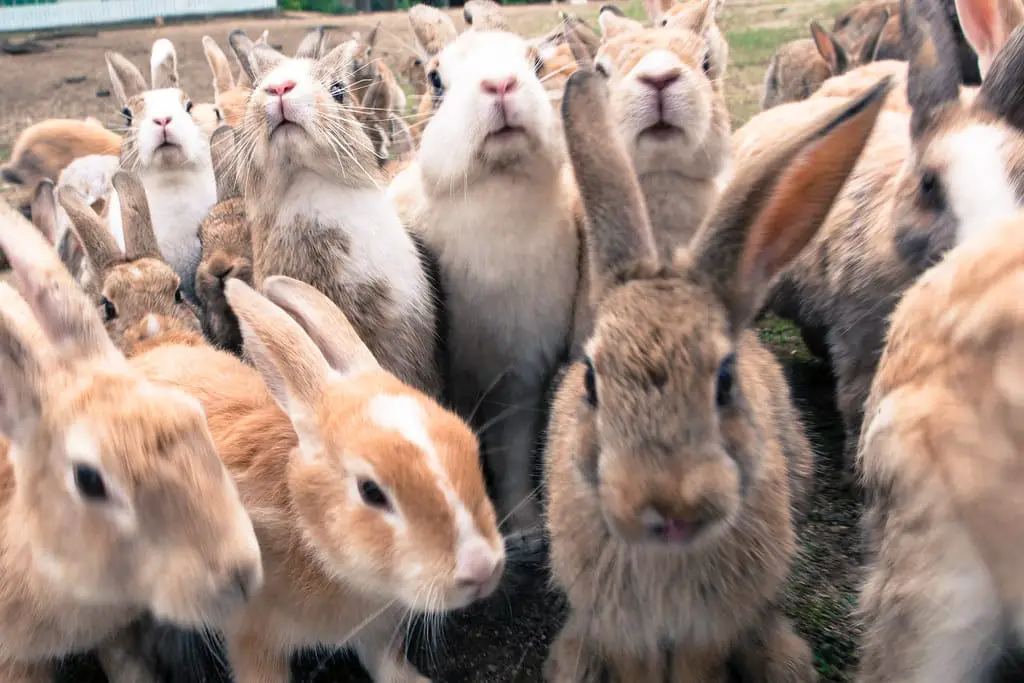
Conclusion
The reproductive capacity of rabbits is a marvel of nature. Their ability to reproduce rapidly and produce large litters has played a significant role in their survival and adaptability to various environments. With a gestation period lasting just around a month and the potential to give birth to several kits at a time, rabbits are well-equipped to thrive in the wild.
The exact number of babies a rabbit can have varies based on factors such as species, genetics, health, and environmental conditions. While some rabbits might have smaller litters of a few kits, others could give birth to a dozen or more. This prolific breeding behavior has both positive and negative implications, as it allows rabbits to rapidly increase their population but can also lead to challenges in managing their numbers in certain ecosystems.
Intriguingly, the reproductive habits of rabbits continue to capture the curiosity of scientists and enthusiasts, driving research into the intricate mechanisms that govern their fertility and breeding patterns. As we marvel at the remarkable ability of rabbits to multiply, it’s important to recognize the role they play in ecosystems and the delicate balance that exists between their reproductive prowess and the environments they inhabit.

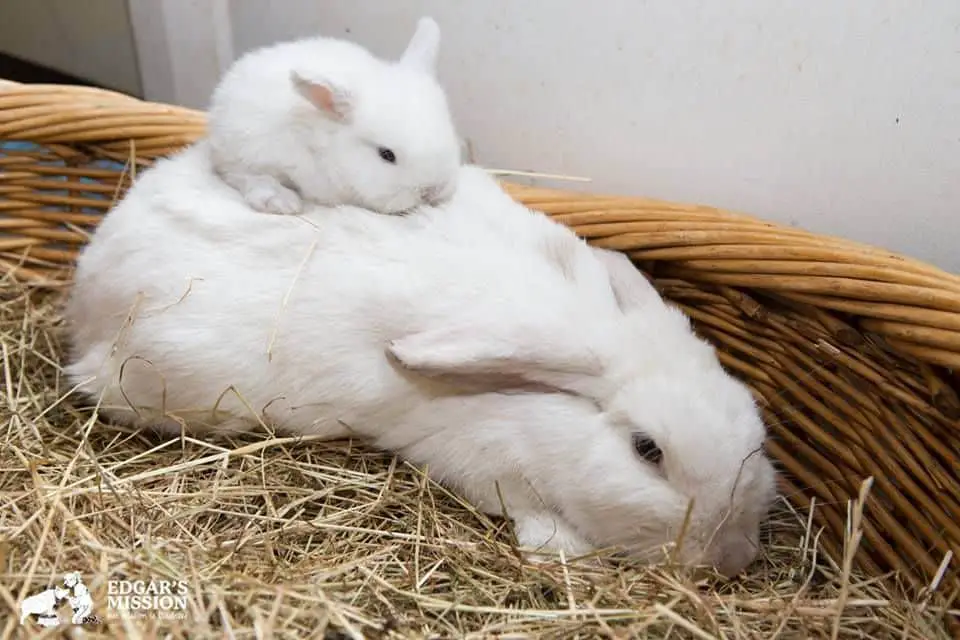
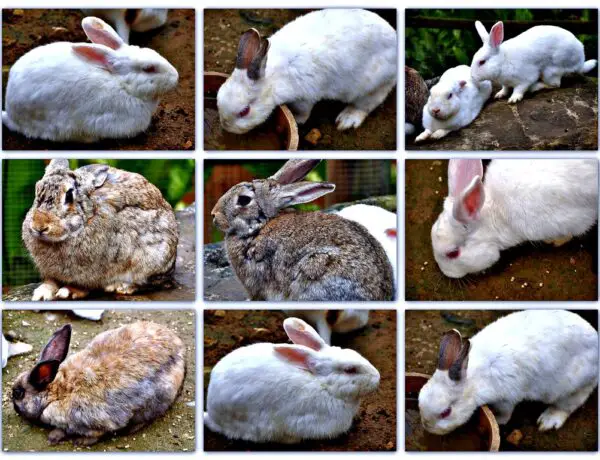
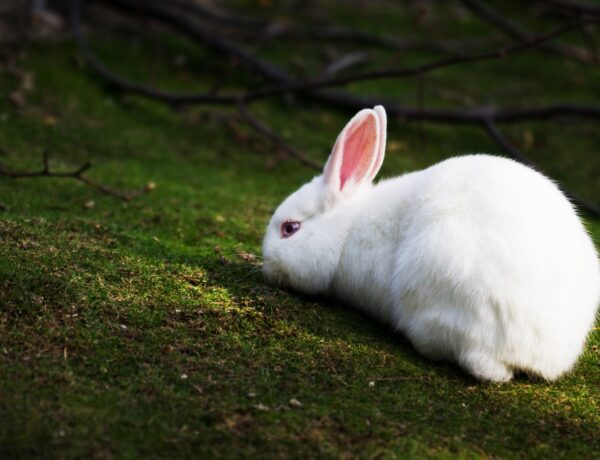
No Comments